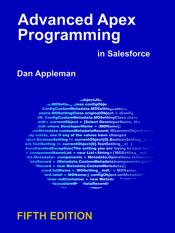A couple of days ago Matt Lacey posted an excellent article on developing for optional Salesforce features. He ended it with a question – how do you ensure code coverage for those orgs that have those features disabled?
For example – let’s say you have code that only runs when multi-currency is enabled on an org:
if(Schema.SObjectType.Opportunity.fields.GetMap().Get('CurrencyIsoCode') != null)
{
// Do this on multi-currency orgs
obj.Put('CurrencyIsoCode', o.Get('CurrencyIsoCode'));
}
How do you get code coverage for this section?
One way to do this is as follows:
First, we refactor out the currency test into it’s own function as follows:
private static Boolean m_IsMultiCurrency = null;
public static Boolean IsMultiCurrencyOrg()
{
if(m_IsMultiCurrency!=null) return m_IsMultiCurrency;
m_IsMultiCurrency = Schema.SObjectType.Opportunity.fields.GetMap().Get('CurrencyIsoCode') != null;
return m_IsMultiCurrency;
}
Though not necessary for this example, in any real application where you have lots of tests for whether it’s a multi-currency org, you may be calling this test fairly often, and each call to Schema.SObjectType.Opportunity.fields.GetMap().Get(‘CurrencyIsoCode’) counts against your limit of 100 Describe calls. This function (which is written to minimize script lines even if called frequently) is a good tradeoff of script lines to reduce Describe calls for most applications.
Next, add a static variable to your application’s class called TestMode
public static Boolean TestMode = false;
Now the code block that runs on multicurrency orgs can look like this:
if(TestMode || IsMultiCurrencyOrg)
{
// Do this on multi-currency orgs
String ISOField = (TestMode && !IsMultiCurrencyOrg())?
'FakeIsoCode' : 'CurrencyIsoCode';
obj.Put(ISOField, o.Get(ISOField));
}
What we’ve effectively done here is allow that block of code to also run when a special TestMode static variable is set. And instead of using the CurrencyIsoCode field which would fail on non-multicurrency orgs, we substitute in any dummy Boolean field. This can be another field on the object that you define, or you can just reuse some existing field that isn’t important for the test. There may be other changes you need to avoid errors in the code, but liberal use of the TestMode variable can help you maximize the code that runs during the test.
Why use a TestMode variable instead of Test.IsRunningTest()? Because the goal here is to get at least one pass through the code, probably in one specialized unit test. You probably won’t want this code to run in every unit test.
With this approach you can achieve both code coverage and, with clever choice of fields and field initialization, functional test results, even on orgs where a feature is disabled.

